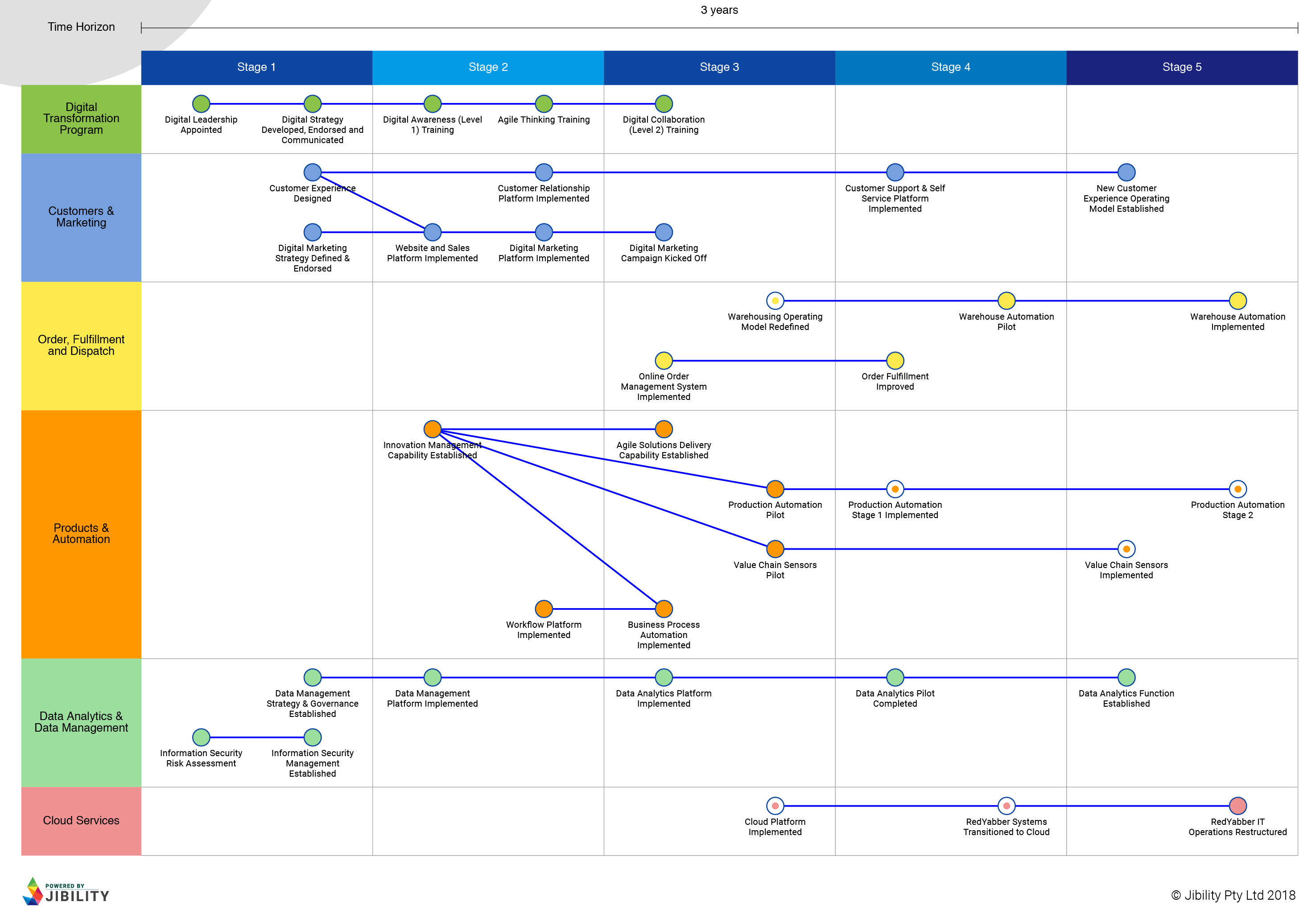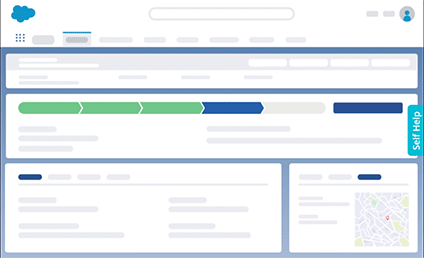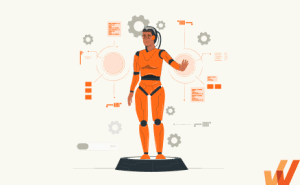How to Deploy Your Digital Transformation Roadmap
- Updated: May 17, 2024


The term “digital transformation roadmap” is tossed around a lot in enterprise businesses, but advice on how to actually deploy one tends to be unnecessarily complicated.
“Establish a successful process that will address the top-of-mind needs of your unique organizational environment” really means “find what works for your company and create a plan to make it happen.”
Building and acting on a digital transformation roadmap can actually be quite simple — you just need to establish the basics first. Let’s look at how.
What Is Digital Transformation?
Digital transformation refers to any initiative a company undertakes to introduce new technology in hopes of improving efficiency or value. While it might seem like a large, lofty goal, companies of all sizes undergo digital transformations all the time.
Digital transformation initiatives can take many forms. It might include moving the company’s files and documents to the cloud, automating repetitive tasks to free up team members’ time, or just connecting and integrating the tack of tools your team is already using.
But a digital transformation strategy includes more than just creating accounts for employees in a new tool or app. In order for the transition to be smooth and effective, your digital transformation initiative needs a comprehensive plan: a digital transformation roadmap.
What Is a Digital Transformation Roadmap?
A digital transformation roadmap is a plan that moves your organization from Point A (using your current digital processes) to Point B (using new digital processes). Think of it like taking a road trip — you know where you are and where you want to go, but you need to map out how you’ll arrive at your destination.
Your digital transformation roadmap helps define and manage the initiative. It provides structure to the migration from one tool to the next — including everything from technology, people, and processes — to ensure a successful transformation.
✓ Thank you, the ebook will be sent to your email
Digital Transformation Strategy Vs. Digital Transformation Roadmap
While digital transformation strategy and digital transformation roadmaps should go hand-in-hand, there are some nuanced differences between the two.
A digital transformation strategy focuses on the “why” of digital transformation, while a digital transformation roadmap focuses on the “how.” Your digital transformation strategy provides goals and the direction your company will take in becoming more digitized, while your roadmap will specifically lay out how you can achieve those goals.
For example, a digital transformation strategy might include broad goals like integrating AI or other technologies into your customer experience to improve customer satisfaction, while a digital transformation roadmap would include specific timelines and milestones for integration.
Importance of Digital Transformation Roadmaps
Digital transformation roadmaps are important for a variety of reasons, but most importantly these roadmaps help ensure you reach your digital transformation goals.
One way a digital transformation roadmap helps your digital transformation strategy is by directly tying digital transformation initiatives to business goals. By mapping these initiatives directly to existing business processes and goals, you can ensure digitization will have real impact on your bottom line.
Another reason roadmaps are important during digital transformation is resource allocation. Having a roadmap ensures that resources are managed efficiently and allows you to measure resources spent against digital transformation milestones.
Finally, digital transformation roadmaps increase stakeholder engagement and buy-in, by outlining their respective roles within the digital transformation journey. Roadmaps help you manage expectations by offering timelines and clear milestones, providing stakeholders with clear markers of success to help them understand what is expected of them.
How to Create a Digital Transformation Roadmap in 5 Steps
Without a roadmap, your digital transformation initiative is at risk of failure. Here are five simple steps you can take to set you and your team up for success.
1. Gather and analyze your data
Before you make any changes, you need to assess your starting point. What existing processes or systems are working? Where can they improve? What specific changes do you expect to see from your digital transformation initiative?
Gathering and analyzing data before beginning your transformation process gives you a baseline to measure the effectiveness of your initiative. For example, if you hope undergoing a digital transformation will increase your team’s productivity, you need to know how much time they’re spending on a particular task before implementing new tools or processes. After the transformation is complete, you can measure and compare outputs to assess if your initiative was successful.
Make sure you have the proper data and insights necessary to set a stable foundation for the rest of your transformation journey. Fill in the gaps or collect whatever is missing before you get started. This will help you tackle the digital transformation challenges that you’ll face throughout the project.
2. Get buy-in from senior management
On the surface, digital transformation may seem like just a change in technology or process — but in order for it to be successful, it also requires a complete cultural change. A new system comes with training and a (sometimes complicated) learning curve. The entire team needs to be on board to ensure the process runs smoothly.
Senior management often leads every major change throughout the organization. Without their commitment, any change management initiative will be dead in the water. In fact, digital transformations are 2.5 times more likely to be successful with senior leadership support.
To get them on your side, you need to be prepared with the right information to sell them on why a change is necessary. Here are some tips for connecting with senior management:
- Relate digital transformation back to company goals or values. How will undergoing this journey bring the organization closer to reaching its major goals? Will making this change help the company better align with its core values? Establishing these connections can help senior management understand why digital transformation is important to the company as a whole.
- Focus on ROI. Senior management needs to know that their investment won’t go to waste. Using the insights you already collected, explain why existing processes just aren’t working — and what they’re costing the company in wasted time, lost customers, or inefficiencies. Then you can present projections for how your digital transformation initiative will change this for the better.
- Find power in numbers. If you know your team is struggling with existing processes or technology, get some of them on board to help present your case to senior management. This can help senior management understand the impact and importance of making a change.
- Personalize your presentation. Think about the role and responsibilities of each individual you need to pitch your idea to. What facts or features will be most appealing to them? By customizing your presentation for each member of management you need to get buy-in from, you can hit the most important touchpoints to build stronger connections.
3. Set goals and objectives
Set clear, realistic, and measurable goals and objectives to drive the transformation process. Setting goals can help your organization set itself up for success so you can achieve real digital transformation ROI faster.
Think about the ultimate end goal for your digital transformation initiative. What ideal outcome will you achieve from undergoing this journey? What is the “Point B” on your roadmap? While this goal may seem far away and difficult to achieve right now, setting your sights on the finish line will help you discover the stepping stones your team needs to take to get there.
Now, work backward to fill the gap between where you are and where you want to be. Is it possible to jump straight to your ideal outcome, or do you need to take a phased approach?
Breaking your roadmap into chunks can make the transformation more manageable for your team — such as stopping at rest stops during your road trip. Each phase gives you a smaller goal to tackle and provides a clear opportunity to regroup and reassess your plan. You can double-check that you’re still on track and make adjustments if necessary.
Follow the S.M.A.R.T. goal-setting structure when establishing your objectives. Goals should be:
- Specific. What do you want to achieve?
- Measurable. What metrics will indicate you’ve achieved it?
- Achievable. Are you capable of achieving it?
- Relevant. Does this goal align with your business plan?
- Timely. When should the goal be achieved by?
4. Create a transformation-ready culture
We mentioned the importance of culture in successful digital transformation already — but the importance of getting everyone on board before any changes take place is crucial for achieving ideal outcomes. If your team fails to see the value in the new processes and technology, it’ll be difficult to get them invested in the final result.
Effectively communicate the need for change and how digital can help improve efficiency and productivity. Get specific with your team, showing them how the new systems will make their work more manageable or how it can reduce frustration and complications.
Give your team an opportunity to voice concerns, express opinions, and share ideas on how to make implementation more effective — especially if team members seem to be hesitant to try new technology.
Take time to answer questions or address issues before they become unmanageable and look for opportunities to get your team involved in the transformation planning process. When they’re involved in the process, they can feel less resistant to the changes ahead.
5. Invest in agile project management
Agile project management focuses on creating a collaborative environment for implementing, testing, and responding to change. While having a set plan is important, agile project management provides opportunities to consistently revisit the set plan and make adjustments according to the team’s needs or concerns.
Agile project management ensures a high rate of success for transformation efforts by breaking the project into sprints followed by feedback. After each bit of change, you’d collect feedback from your team to understand what is working and what isn’t to improve the entire implementation process.
In our comparison to a road trip, agile project management is like a co-pilot in the passenger seat. They’re ready to adjust the roadmap to accommodate detours, unanticipated rest stops, and requests from other riders in the car.

3 Tips for Successfully Deploying Your Digital Transformation Roadmap
Now that your digital transformation roadmap is set, you’re ready to deploy. Here are three ways you can improve your chances of a successful journey.
1. Turn your employees into change ambassadors
You’re not taking this trip alone. In fact, you won’t be able to reach your destination without the support of the people most affected by the change you’re creating — and just telling them to change their ways will only lead to resistance.
Starting with leadership, get influential people (department heads or senior managers) to understand the purpose and value of the transformation. Getting buy-in first will make it easier to guide your team.
Designate change leaders to act as ambassadors for the transformation. These should be trusted and respected members of your organization that can easily communicate the benefits of the upcoming change with the rest of the company.
Clearly define your communication strategy to ensure consistency as each ambassador connects with teams across the organization. Prepare them with content, talking points, and statistics to back up their claims and provide them with ample resources so they can answer questions with confidence. You can even bring in a digital transformation consulting company to help you enact change and implement your digital transformation roadmap.
2. Set a fast transformation pace and share early wins
Once you have your senior team on board, it’s time to hit the gas. The first few months of your transformation plan are incredibly important and often set the pace for the entire process.
In fact, one study found that companies in the top quartile of successful digital transformation achieved 57% of the initiative’s value in the first six months.

Celebrating early wins is a great way to maintain enthusiasm — but don’t allow early achievements to make you complacent. To keep the momentum going, reinvest those results and add even more value to your transformation.
For example, let’s say you deployed Workday one month ago and achieved a 30% user adoption rate. Rather than trying to push forward and force the other 70% to get on board, invest in the 30% who are already using the tool. See how those employees are using the system and introduce new ways to use Workday to achieve even more benefit.
As your early adopters see more value, they will become vocal advocates for the transformation. They can bring more team members on board and can work with late adopters to identify knowledge gaps to address through additional training.
Once you hit the road, you need to keep the transformation moving forward. Keep revisiting, renewing, and reinvesting in your digital journey to continue seeing positive results.
3. Use software to support your digital transformation roadmap
Much like road trips, digital transformation initiatives are rarely without obstacles. Change management tools will help you stay on track and make the implementation of new technology more efficient.
Here are some tools to consider in supporting different aspects of the transformation:
- Digital adoption platform (DAP). DAPs empowers users to onboard quickly onto new digital tools and processes with contextual guidance, in-app walkthroughs, task lists, smart tips, and other in-app content. Users gain knowledge without having to sacrifice productivity, while in the flow of work.
- Feedback gathering tools. Encourage employee engagement, facilitate idea sharing, and collect insights throughout the transformation process. Use the data you collect to prioritize initiatives.
- Knowledge wikis. Create a central resource for training materials that employees can refer back to whenever they need it. These can take the form of a knowledge base or an internal wiki.
- Digital bullet journals. Track progress and milestones throughout the transformation process. Get a top-level view of the progress you’re making.
- Employee chat channels. Provide a dedicated space such as a channel on Slack or MS Teams, a Trello board, or an intranet portal for employees to ask questions, share tips, or get updates related to the transformation process.

A digital transformation roadmap can seem long and often complex. While there are bound to be holdups along the way, you can ensure your safe and on-time arrival by providing in-depth guidance and support for your users right from the start.
With Whatfix Digital Adoption Platform, you can provide contextual guidance for users in real-time — keeping them engaged and informed as they work. Whatfix interactive walkthroughs and training are customizable, so you can continue to address employee concerns and knowledge gaps at every stage of your transformation.
Schedule a demo with our experts to discover how Whatfix can help you drive your digital transformation initiative.
Request a demo to see how Whatfix empowers organizations to improve end-user adoption and provide on-demand customer support
Thank you for subscribing!

